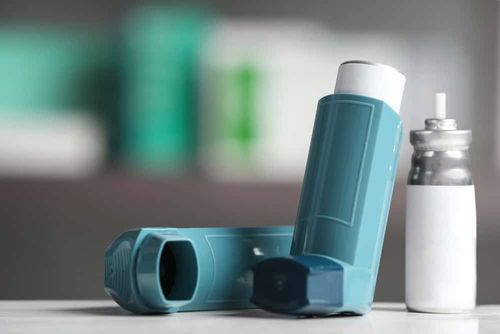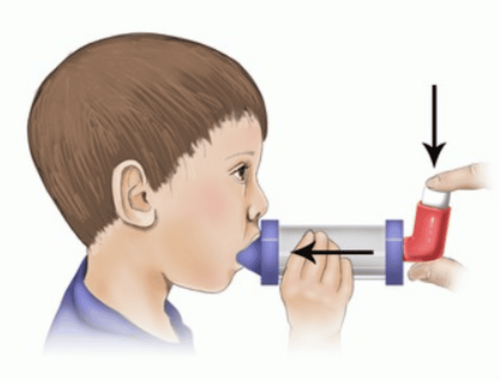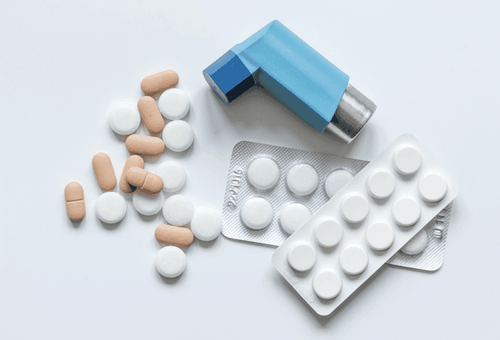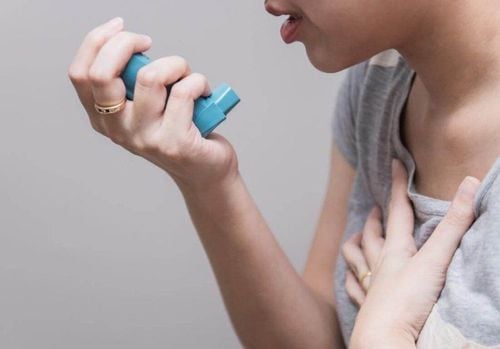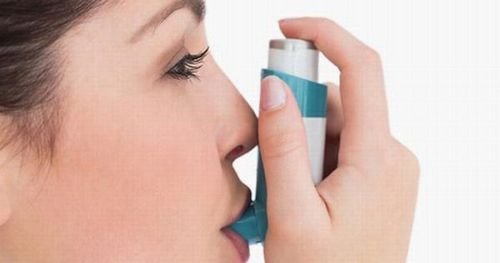This is an automatically translated article.
The article was written by Pharmacist Bui Thi Thanh Ha - Faculty of Pharmacy - Vinmec Times City International HospitalPatients should note that there are many types of spacers with different structures and sizes. Talk to your pharmacist carefully for instructions.
1. What is a spacer? Who needs spacers?
The metered dose inhaler is one of the most commonly used inhalers for the treatment of respiratory conditions such as asthma or chronic obstructive pulmonary disease (COPD). Although very commonly used, metered-dose inhalers require the user to inhale gently and deeply as soon as the medication is sprayed out. When the inhaler technique is not correct, the drug will not enter the lungs but stagnate in the throat, reducing effectiveness and increasing side effects. To help overcome the above disadvantages, the spacer was born with the purpose of supporting patients who are difficult to perform complex movements who can use metered-dose inhalers well.
The buffer chamber is a tubular device with a one-way valve. The spacer allows the patient to breathe normally during the administration of the spray without the need to coordinate hand movements. The drug is delivered directly to the lungs, where it will work; reduce the amount of medication that stays in the mouth and throat, where it can cause discomfort, irritation, and even infection. The spacer also makes it easier to use the sprayer. Given the above advantages, the following patients should receive a spacer if metered dose inhalers are needed:
All children. Children under 4-5 years of age need a spacer with a mask All adults using corticosteroids (eg, Flixotide, Symbicort) Adults who have difficulty coordinating breathing with Hand gestures when using a metered-dose inhaler Everyone during an acute asthma attack
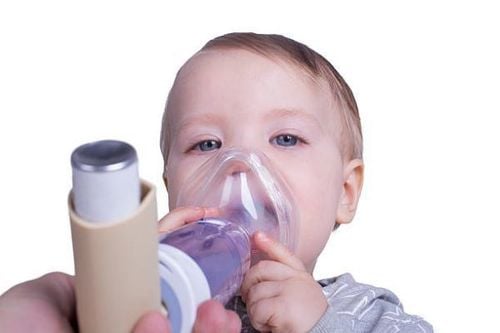
2. How to use the spacer
2.1 Steps to use spacer with metered dose inhaler
Open the spacer cap and the metered dose inhaler cap Shake the metered dose inhaler vigorously. Insert the mouthpiece of the metered dose inhaler into the spacer. Have the patient suck on the other end of the spacer. If a mask needs to be used (children under 5 years old), attach the mask to the other end of the spacer, place the mask on the patient's face, making sure to cover the patient's nose and mouth. Allow the patient to breathe normally. and press the metered dose inhaler. Wait for the patient to take 4-5 breaths before removing the spacer. If the patient needs to take 2 puffs, each puff should repeat all the above steps. If the medicine contains corticosteroids, Rinse your mouth and spit it out after taking the medicine. If using a mask, wash your face after using the medicine
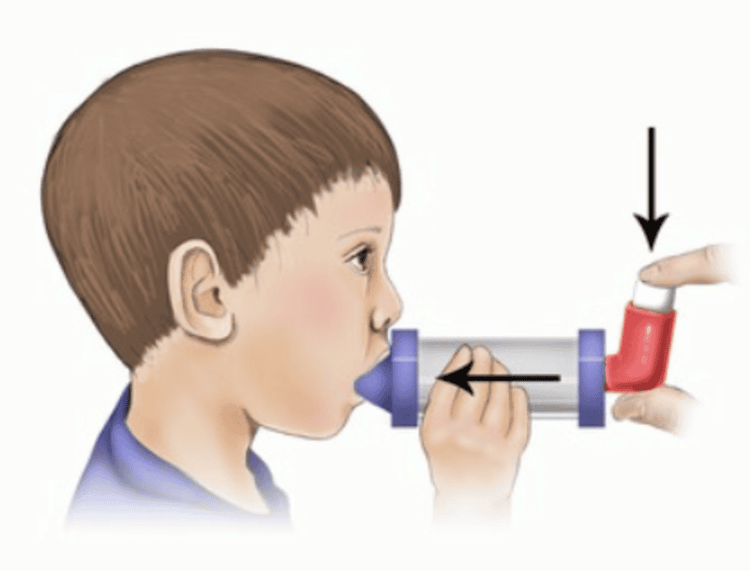
2.2 How to clean the buffer chamber
Wash the spacer chamber with warm water with diluted soap, do not rinse with water. Dry soap on the spacer will reduce drug adhesion to the chamber wall. Allow the chamber to dry on its own in room air. Cleaning the chamber with a dry towel creates an electrical charge, which causes the medicine to stick to the walls, reducing the effectiveness of the chamber Wipe soap from the mouth of the chamber. All new buffer chambers should be washed according to the above method prior to use. If not washing in time, it is necessary to spray at least 10 sprays into the spacer chamber to completely cover the spacer wall before use. After that, the spacer can be used as usual.
Please dial HOTLINE for more information or register for an appointment HERE. Download MyVinmec app to make appointments faster and to manage your bookings easily.





